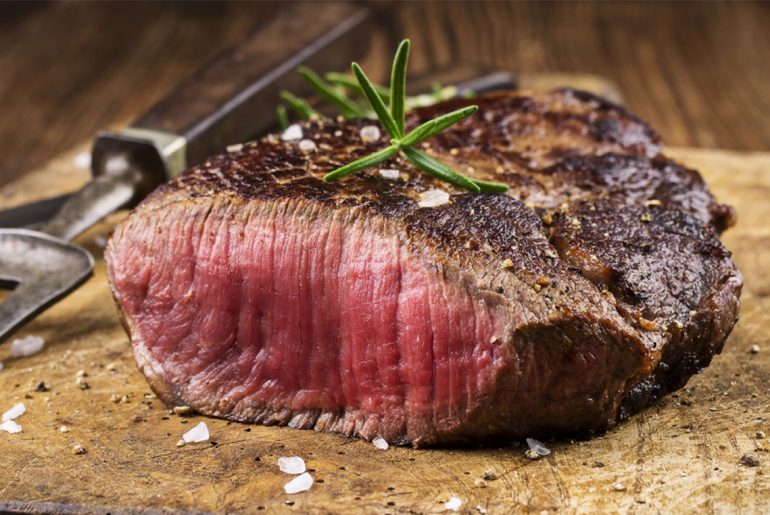When the smell of sizzling, charred steak is wafting through the air, it can be hard to delay any further gratification. You want to dive fork first into that juicy piece of meat and feast until you’re full. But before you make this backyard barbecue blunder, you should understand the importance of resting meat. Let’s explore.
What happens to cooked meat?
Cooking a piece of meat causes the proteins to ‘set’. The more cooked the meat, the more ‘set’ the proteins are, thus creating the variation in firmness between, say, a raw and well-done piece of meat.
A meat thermometer can tell you exactly how cooked your piece of meat is, but most cooks pride themselves on being able to tell doneness using only the tong test. (Poke any steak with a pair of tongs and the amount of push-back will tell you its approximate doneness.)
Why all meat should rest
If you cut straight into a cut of meat after cooking it, you’ll see a big puddle of juice fill your plate. All that juice on the plate means it’s not flavoring the meat or keeping it juicy and tender. Resting meat away from the heat gives the juices time to redistribute back through all parts of the meat.
This phenomena has to do largely with temperature. The muscle fibers of meat change shape when cooked. A cooked piece of meat could never hold on to as much liquid as a raw cut, but once you allow meat to cool slightly, the structure of the meat relaxes and the muscle fibers widen, allowing them to hold on to more liquid when cut.
How to rest meat
Remove the meat from the heat and place it on a warm serving platter or plate. Loosely cover the meat with foil — but not too tight! If it’s too restricted the meat will sweat and you’ll lose the moisture you’re trying to keep inside.
How long should meat rest?
Resting time fully depends on how big your cut of meat is. Bigger cuts like roasts should rest for 10-20 minutes. Steaks should rest for at least 10-15 minutes depending on thickness. (A 1.5-inch-thick steak is about 10 minutes, but for prime rib this might take up to 45 minutes.) Pork chops and chicken should rest about 3-5 minutes, also depending on thickness.
A few general rules of thumb to help you gauge when it’s safe to slice your meat:
- 5 minutes per inch of thickness
- 10 minutes per pound
- Half the total cooking time
Of course, practice makes perfect. So go forth and practice this summer. Delicious, delicious practice.
Also try, Char-broil’s Great Book of Grilling, book review ,
and 7 Steps to prep your grill for grilling season.




